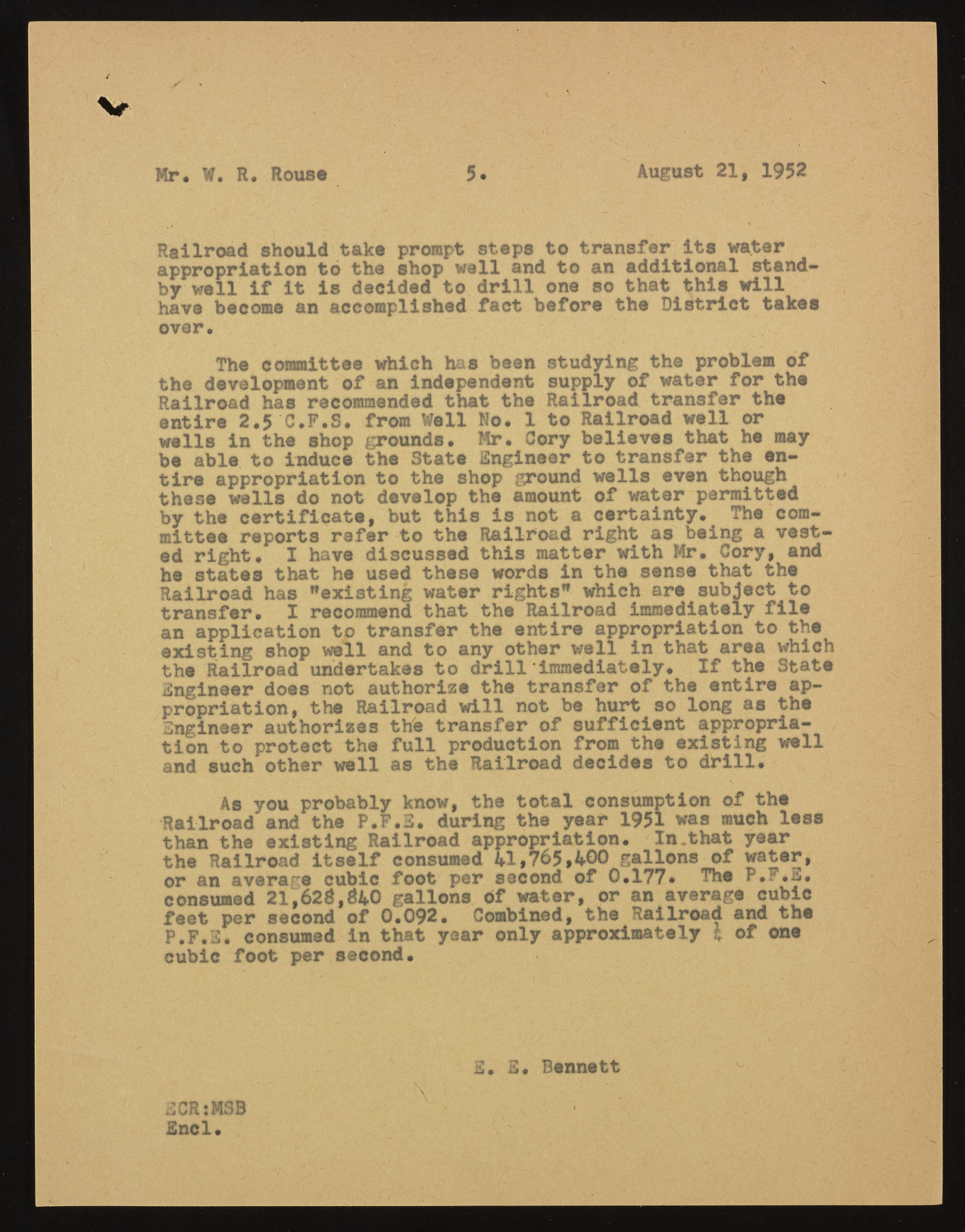Copyright & Fair-use Agreement
UNLV Special Collections provides copies of materials to facilitate private study, scholarship, or research. Material not in the public domain may be used according to fair use of copyrighted materials as defined by copyright law. Please cite us.
Please note that UNLV may not own the copyright to these materials and cannot provide permission to publish or distribute materials when UNLV is not the copyright holder. The user is solely responsible for determining the copyright status of materials and obtaining permission to use material from the copyright holder and for determining whether any permissions relating to any other rights are necessary for the intended use, and for obtaining all required permissions beyond that allowed by fair use.
Read more about our reproduction and use policy.
I agree.Information
Digital ID
Permalink
Details
More Info
Rights
Digital Provenance
Publisher
Transcription
Mr. W. R. Rouse 5. August 21, 1952 Railroad should take prompt steps to transfer its water appropriation to the shop well and to an additional standby well if it is decided to drill one so that this will have become an accomplished fact before the District takes over. The committee which has been studying the problem of the development of an independent supply of water for the Railroad has recommended that the Railroad transfer the entire 2.5 C.F.S. from Well No. 1 to Railroad well or wells in the shop grounds. Mr. Cory believes that he may be able to induce the State Engineer to transfer the entire appropriation to the shop ground wells even though these wells do not develop the amount of water permitted by the certificate, but this is not a certainty. The committee reports refer to the Railroad right as being a vested right. I have discussed this matter with Mr. Cory, and he states that he used these words in the sense that the Railroad has "existing water rights’* which are subject to transfer. I recommend that the Railroad immediately file an application to transfer the entire appropriation to the existing shop well and to any other well in that area which the Railroad undertakes to drill immediately. If the State Engineer does not authorize the transfer of the entire appropriation, the Railroad will not be hurt so long as the Engineer authorizes the transfer of sufficient appropriation to protect the full production from the existing well and such other well as the Railroad decides to drill. As you probably know, the total consumption of the Railroad and the P.F.S. during the year 1951 was much less than the existing Railroad appropriation. In.that year the Railroad itself consumed 41,765*400 gallons of water, or an average cubic foot per second of 0.177. The r.F.E. consumed 21^628,$40 gallons Of water, or an average cubic feet per second of 0.092. Combined, the Railroad and the P.F.S. consumed in that year only approximately h of one cubic foot per second. S. S. Bennett _ §g|| SCR;MSB J I • Enel.

